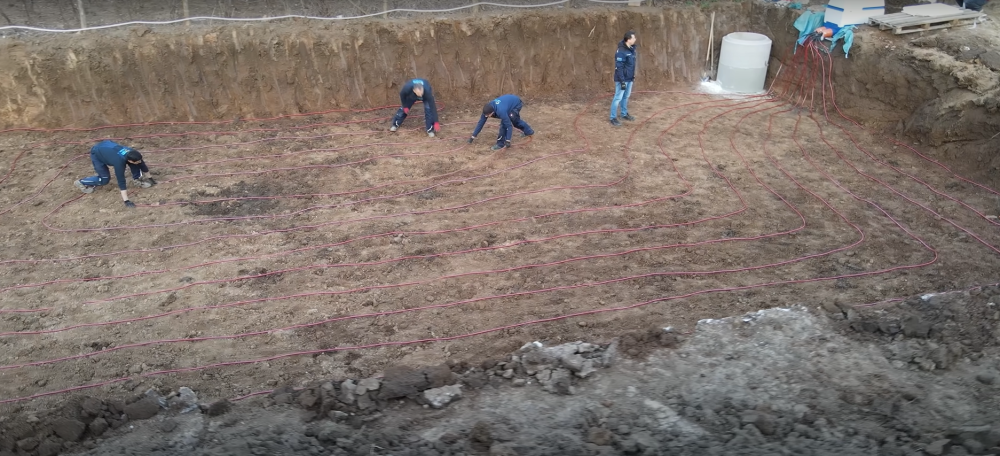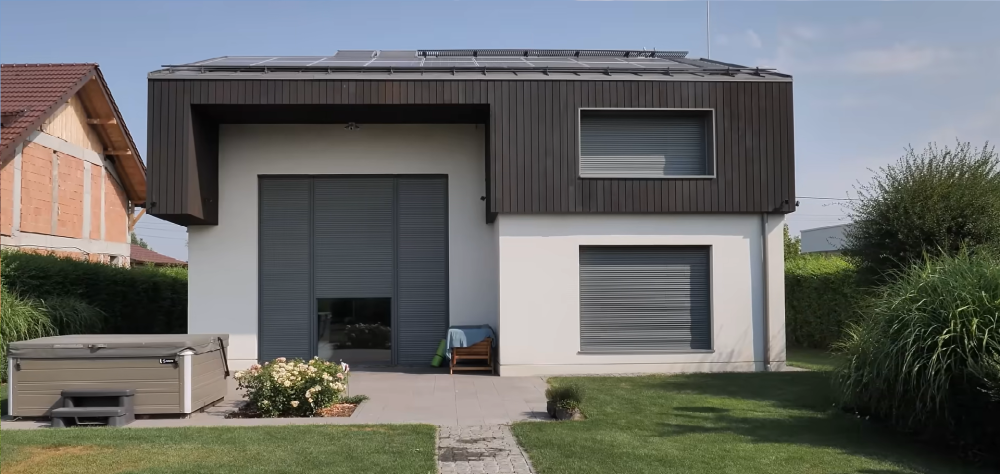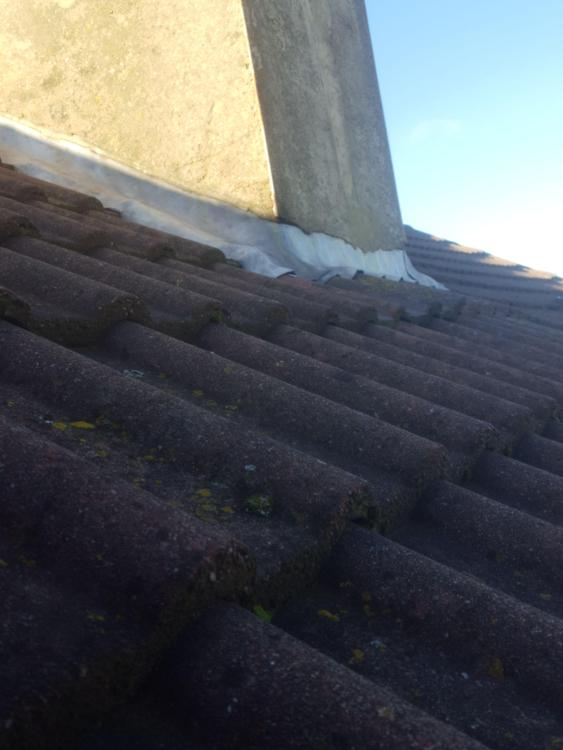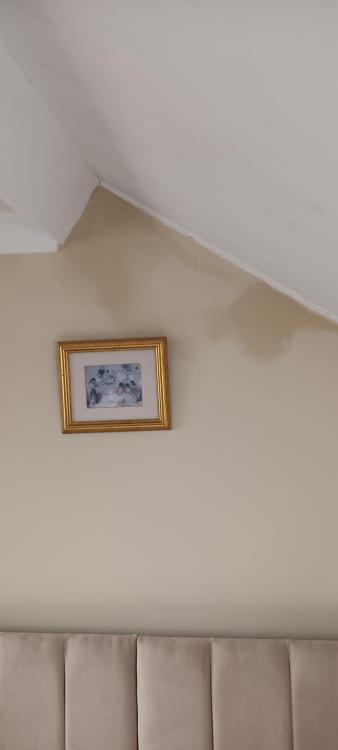Leaderboard
Popular Content
Showing content with the highest reputation on 07/25/23 in all areas
-
While that is definitely a good perception, traditional brick and block houses can be built to meet new building regs, and can be built to exceed. The key to any build where you want to minimise in the energy input to the final build is insulation, insulation, insulation, and that includes air-tightness. What you need (in my personal opinion) is a youngish builder who already has a reasonable level of experience, who is prepared to build over and above the building regs and to address those key items while they are building. While this seems a tall order, the earlier recommendation by @Temp to visit some local "one-off" build sites is seconded by me. Alternatively visit local builders merchants or tool hire shops and ask them for recommendations. I found my GRP roofer in this way (and I am very pleased!)2 points
-
Either or. I’d imagine they might have built the main house all the way up,struck the scaffold & then built the annexe separately but maybe not. Longer term-I’d say all you can do is fill it & monitor.2 points
-
Happy to report that the pdf bought from UK Planning Maps passed validation by ####### District Council yesterday. The online markup for the site boundary worked OK for me after a bit of practice despite what one of the reviews says. The hard copies turned up from Kirkwall 48 hours later, not really necessary but bought as an insurance, printed on good stiff paper and not creased in transit. I edited the file to add the proposed heat pump (a tiny rectangle 3 x 9 pixels!) using IrfanView, which is a free download, to convert to .bmp and using MS Paint to edit, then the reverse. Some advice on the website on how to do this would be helpful. Conclusion: does what it says on the tin!1 point
-
1 point
-
What about ICF, no experience myself but seem to all get delivered on pallets. Light and easily moved about it would seem. Someone like @Conor could provide more information re ICF1 point
-
I don't think I can help with specifics. The building company I used have disbanded, but in any case were probably too far away to be interested in your job. Some of them have retired, and some are now working in an individual capacity or joined other firms. Just to be clear though a locally built "stick build" like this is exactly the same as if the same design had been stamped out in a bigger factory and all arrived on one articulated lorry. It is not in any way an inferior build. At least 2 local self builders have stick built on site, one all on his own, and the other by employing a general builder to help him.1 point
-
I found one or two wouldn't recommend people for fear of somehow becoming liable so I started out saying things like.. "I know you can't recommend somone but is there anyone I should go check out myself? That sometimes worked well. Other places were much more forthcoming and even told me people to avoid, especially if there wernt any other customers around.1 point
-
Having seen the design with open plan areas and full height areas I think you need to find a builder and have him sit down with your Architect to discuss how to construct it. Depending on the outcome the builder might want construction drawings done. For example roofs need to be triangulated to stop them pushing walls out. There are several ways to do this but large steel beams or frames might be needed. Above the full height open plan areas. If there is an access problem will you need to and be able to crane them into place?1 point
-
Perhaps take a drive around. See if you can find some nice one off houses being built. Stop and tell them you might need a builder soon ask if you can look around. That's how we found our builder (and ruled out a few).1 point
-
Most decent joiners will be able to stick build. It just means the timber frame is built on-site rather than built as panels in a factory then brought to site. Stick built will likely be cheaper to build and it’s safer for you financially. A lot of joiners can also do contract builds by bringing in trades to do the bits they don’t do. The joiner I’m using does this for example although I have actually done all of that in my case.1 point
-
1 point
-
1 point
-
Hole in the unit corner & discrete grommet - then a stock spur socket out of sight? Perhaps just the hole to push the cable loop into?1 point
-
From data sheets it seems for a given frame size they differ only in refrigerant charge, software and possibly max compressor, fan and pump revs. Hence it would seem entirely possible to downrate a unit once installed if it proves to be too big, does anyone offer that as a feature?1 point
-
Resin based but tends not to be flexible so any movement could/would break a seal1 point
-
You need them on flow and return or an air bubble will just sit there. These seem quite good Inta 15mm Automatic Air Vent AAVB15 I got mine from here www.Heatingspares247.com1 point
-
Yes my answer don't sister if not needed because it is a lot of extra material and work.1 point
-
That isn't strong in itself so you don't have to worry about the roohlight strength. For strength you need fibreglass sheets madd to the vladdinv profile. There are also polycarbonate moulded to suit, which will simply lap, whereas twin wall is fiddly to fit. If there is an agricultural cladding supplier near you, they will get it in the right profile. But don't the bitumen sheet people offer clear sheets too? Buying one panel might be quite costly. Come back on here for fixing advice....basically use very big washers.1 point
-
I vaguely remember the inputs and tickboxes for boiler and controls make a big difference.1 point
-
Think I'd just concrete the inside. Otherwise dealing with the gaps/joints will be a never-ending frustration. mixing concrete = easy laying concrete = easy leveling concrete = tricky Plenty of YouTube help or an experienced friend is well worth the beer cost.1 point
-
The other difference with propane is that it's denser than air so accumulates in sumps and drains and doesn't disperse as easily as mains gas.1 point
-
You see an awful lot of Geberit flush panels in public places, pubs restaurants etc. Does this mean they are more robust or have they just beaten Grohe on discounts. We have Geberit now but Grohe in the last place. The Grohe one used to sometimes stick and continue running, never got to the bottom of that, sold the house and moved on 😄 But that's just one data point. I guess also, it depends on which flush plates you want. For the new build the Geberit black plates where what we wanted, so we went Geberit for everything. On price, we found a parallel import site which was reasonable, as in not so much of a rip off as the UK merchants. Before the B catastrophy, you could order from Reuter Badshop for example and buy at a 30 to 40% discount on the crazy UK pricing. Delivery was on pallets and very quick. If you know anyone in the EU and you're likely to visit them, you could get stuff delivered to them and sling it in the back of the car/van - think you're allowed up to £600 of goods without paying tax. Our son lived in Holland when we were doing our build, so I had all the taps delivered to him and we picked them up when we were across. Saved a lot!! Simon1 point
-
Yes. "It's about the install detail as much as the heat pump itself" They were all from last week. Can conclude that it's stupid to reheat cylinders first thing in the morning vs middle of the day. Can conclude that it's stupid to heat quickly. Can conclude that it's stupid to heat them too hot etc. By a factor two. Some of that week be down to installer/user error. Some down to control available on the unit. Some down to clagging A N Other cylinder onto the heat pump and having only flat out or nothing control available. What are the options available to those buying end of line Samsung units with the control interface to a third party cylinder? Those buying Samsung units with the Samsung tank? Ditto other models. The point was perhaps don't cost yourself more than you save over the life of the asset. Space heat will follow the listed sCOP if output temperature is vaguely compensated. Hot water sCOP isn't listed and varies significantly between setups.1 point
-
Firstly Truth is good. Secondly, most insurers invest heavily in finding an excuse to deny responsibility. I met an insurance manager (you will have heard of them) who boasted that only 30% of their income went out again in claims. This is exceptional I believe, but the principle stands.1 point
-
Hi @Big Jimbo, I've had a response from the BCO, who seems to have changed his story, in that he now agrees with me that the BS 7671 EIC form can't be used. He is now saying that the building control (or council) maintenance team can be used to do this. There is a special Development Category (D71) for "electrical work - carried out by others" for which there is a fixed charge of £650 (inc. VAT). He said there are inspections at the first and second fix stages, which I'm going to try to change and ask them to review my electrical schematics before I start the install, rather than them pick things up after they have been installed. I've also asked him what type of documentation they produce, since the Part P approved document says that neither the BS 7671 EIC and EICR are suitable. I'll see what happens.1 point
-
I have a similar question. On parts of our wall we will have open vertical cladding above a lower section of render. The top half of the wall has black waterproof UV resistant membrane fitted so that rain passing through the gaps in the cladding will drain down without soaking the timber frame. The issue is how to stop this water then draining down behind the cement boards that will take the render? I guess having permanent moisture behind this boards will be sub-optimal? Do we need some sort of metal cill to deflect the water out and over the face of the render? thanks1 point
-
Oxy-acetylene and/or angle grinder obvs. I know this is not what you asked, but there are ovens that have working pyro cleaning - a better long-term solution? Return the other for a refund as 'not-fit-for-purpose'.1 point
-
Work on a minimum of 300 litres. The big issue is the ASHP will not heat the water in the tank as hot as a gas boiler would. So in use, the hot water from the tank will be diluted with less cold water, so for the same hot water usage as before, you will need a bigger tank. Look at Telford stainless steel unvented cylinders, they will do any combination of input coils. You will need a high capacity heat pump input coil as well as a separate solar thermal input coil.1 point
-
This has been coming down the tracks for some time, first for rental properties and now for sale. It has been blatantly obvious to me for years, that a house with a poor EPC should be worth less than a house with a good EPC. But that does not yet appear to be the case. You still hear of people buying an old house with a poor EPC because it has "character" and then complain the first winter at how much it costs to heat, information clearly available in the EPC. It is nearly 10 years since we decided to build our second self build, and it was obvious even then, that the only logical thing to do was aim for as close to passive house as I could, and I ended up with a house with an EPC rating of A94. Our BCO even admitted it was the first A rated house he had seen. That in itself is shocking. But I do feel sorry if people are not even able to sell a house even at a reduced price, unless the work is done first to upgrade it. Preventing sale of assets is for me one step too far for any government in any country. But it will be another nail in the SNP coffin which must nearly be shut by now.1 point
-
See diagram 17 row B.. If it came up through the flat roof within 2300mm of the parapet it would need to go 1m above the parapet. That's what I would do in your case where it runs up the outside of the wall. Remember it also needs to be at least 4.5m above the appliance. If there are any other buildings nearby it should really be higher than those as well. Edit: Row D suggest 600mm above the parapet might be OK but I'd go with 1m.1 point
-
Are there any ‘assumed’ values in the current calc - they will generally assume ‘conservatively’ i.e. not to your gain. On a similar note I would double check all their input data. Stuff as simple as GIA can be substantially out. SAP calcs are fairly cheap and therefore often it’s a fairly careless procedure.1 point
-
Yup, muckaway costs what it costs, same as everything. Question is what do you need to allow for and what things to factor in that are part and parcel of the dig. Based on our somewhat massive dig (see the blog) it aint as simple as it seems. These are non-expert observations and based only on what we have seen - your mileage may vary. Ours was approx 600m3 - 'as dug' or 'in the ground' gets a bit immaterial at that point - its just really big and expensive! Firstly you need to understand what the ground is like - to the depth you plan to dig (plus some), and over the whole site. Our clay was relatively easy to dig out but was potentially very messy and sticky. Also we know it was pretty consistent over the site but we did hit a patch of gravel in the clay that meant more sheet piling we had not accounted for. Not picked up on our soil survey btw. Then you need to calculate just what volume to dig (the obvious bit) - you will need at least 1m all round the outside of the slab to allow access, and then you need to batter back (i.e. create a slope to ground level) so it doesn't all fall back in (or sheet pile if you dont have the room). The batter angle (or technically the angle of repose ) depends on the ground conditions so you need to check with your SE on what is a safe angle. You also need to dig deeper than the slab as you will need a sub-base (Type 1), some blinding layer, insulation somewhere, the slab itself, screed, floor covering etc/ So work from FFL downwards and add the extras to the muckaway. BTW dont dig any more than you have to - you can't un-dig and any dug areas you dont need will probably need to be backfilled with brought in materials not your muckaway. As you say the 'in the ground' volume is not the same as the 'as dug' since it 'fluffs up'. I think this depends on the soil type - there are calculators that help (eg https://source4me.co.uk/calculate_excavated_spoil.php) determine volume and weights. Weight is also important as our lorries measured weight load and beeped when they were up to weight - even if there was space to get a few more bucketfuls in you stop at a weight limit. Wet clay is very heavy in winter - summer might have been better - or if you can dig and leave it for a few months to dry before carting it away I am told this helps reduce the cost/weight. I suspect that if you talk to muckaway contractors they will work that out for you - but it might 'fluff up' in the process. Drainage of the site, both when digging and afterwards, are really important - when you dig a big hole it typically fills with water. Our guys very early on dug a temporary French drain - a trench filled with gravel - round the slab. This then goes into a temporary sump and is pumped out and keeps the site dry-ish or manageable. You need to have somewhere to pump to btw. We will get a proper drain later but this temporary one is all extra cost - more digging and gravel in that you probably dont think about. You need to think about the logistics - our site looked huge but when it comes to digging and muckway its really tight. You need to have somewhere to stand the lorries to load them, and you need to make sure they dont get stuck in the mud - or leave half your site on the highway. Our guys dug an off road area, filled it with type 1 and then compacted it, just for the lorries. Hardly a drop of clay on the road - but more muckaway and costs - but a great base for our new driveway. Also there seems like there is a huge amount of skill in digging: first some digging, loading some, moving the digger, making sure you dont dig yourself into a corner and generally thinking a bit before going wild with a big digger. Our biggest time constraint while digging was getting enough lorries in a day - but we were close to the point of not being able to fill them fast enough. If you want to keep some topsoil for landscaping then you need somewhere to store it - or it goes into muckaway and then you buy it back! And you will need some storage area on site - so that might just be where you were planning to store the topsoil! So to summarise the simple steps - get a topo and soil survey so you know where you stand. Then you will need an SE to design the foundations / basement and he (or she) will probably have the biggest cost impact on your whole project cost (if I knew then what I know now!), plus a drainage engineer in our case. Then you work backwards from this and the Architects designs to the hole, how big it is etc etc. Then you can figure just how much it is likely to cost, and how the logistics might work. In our case our GW contractor wasn't able to price the job until the SE had spec'd the concrete and produced the steel bending schedule so it was unknown for a very long and worrying time! So good luck with the project, and hopefully all the above was just a recap for you - I would say that muckaway is the bottom of the iceberg!1 point
-
We had 750 tons of mostly Clay to remove by lorry 20 ton at a time I did a deal with a local haulier 3 lorry’s Each returning with reclaimed hardcore 130 per load of hardcore 130 Muck away We started in November Had we started on schedule in June We would have saved a third on the muck away Prices three years ago1 point
-
Hi all i have the roof from hell. I have had 3 roofers round to fix an issue with the top floor chimney breast it leaks water via a damp patch at the top right where it meets the roof. 1st roofer put on new ridge tiles and used some grey magical sealant. 2nd roofer huffed and puffed. 3rd roofer saw some tile nails missing removed magic sealant from the 1st roofer and put proper lead flahshing on removed a chimney pot and blanked it off. Water/damp still comming in when it rains. Tried to get in touch with 3rd roofer to come back and investingate but he is not returning my messages. If there are any roofers that are worth their salt please take a look at the photos and any suggestions to fix the issue would be greatly apprecitaed. This has been going on for over a year now.0 points
-
0 points













